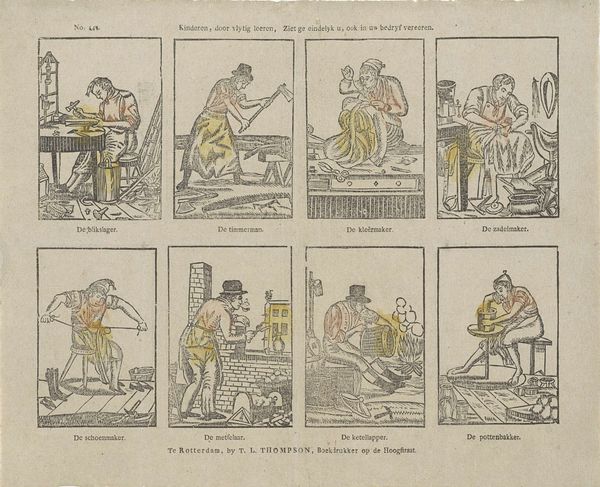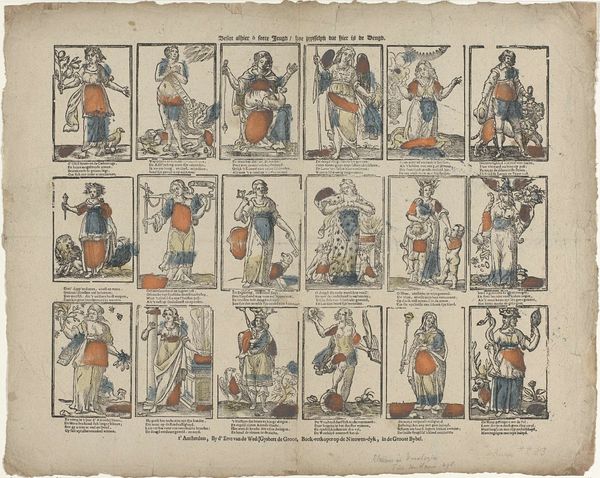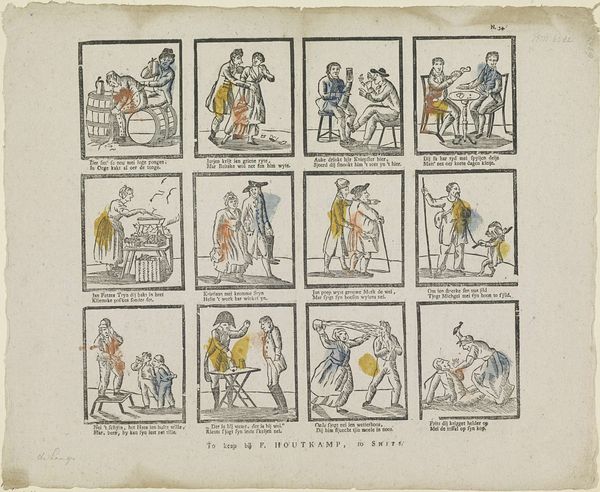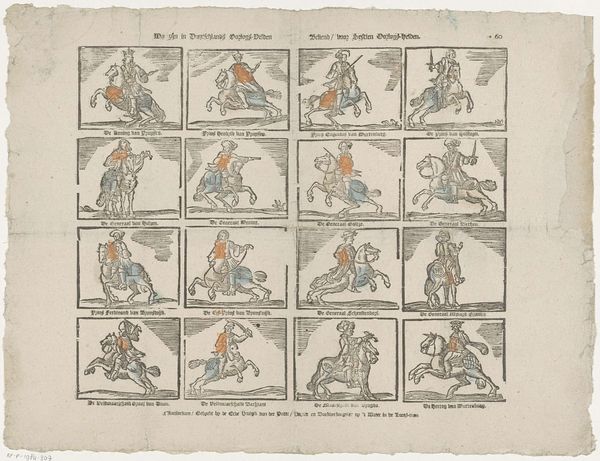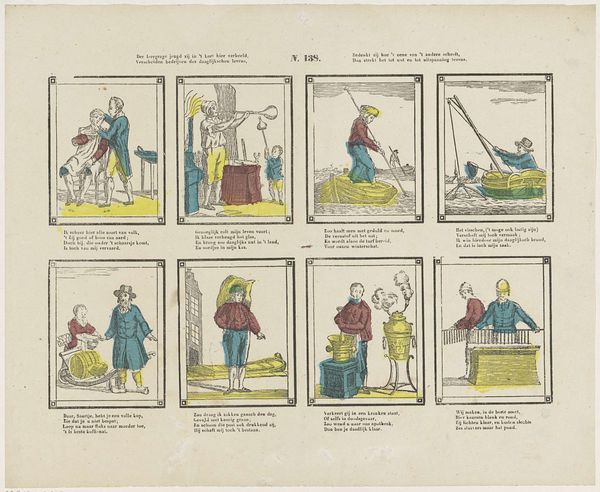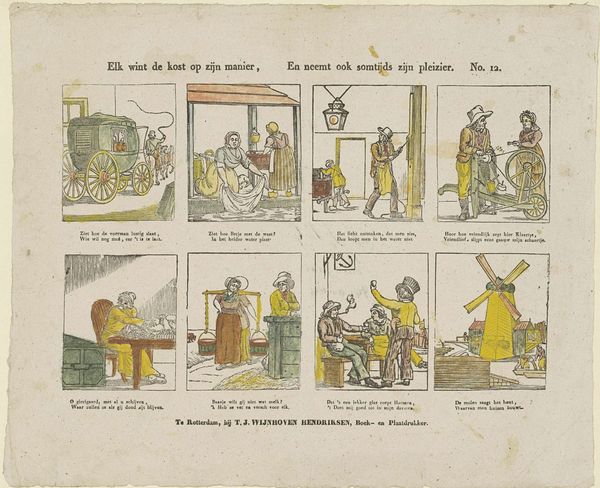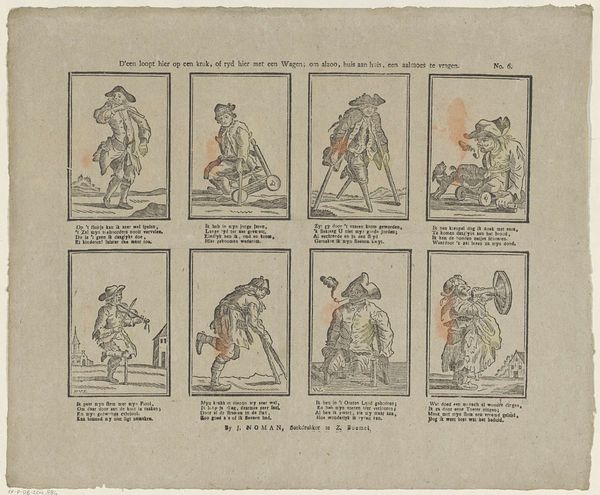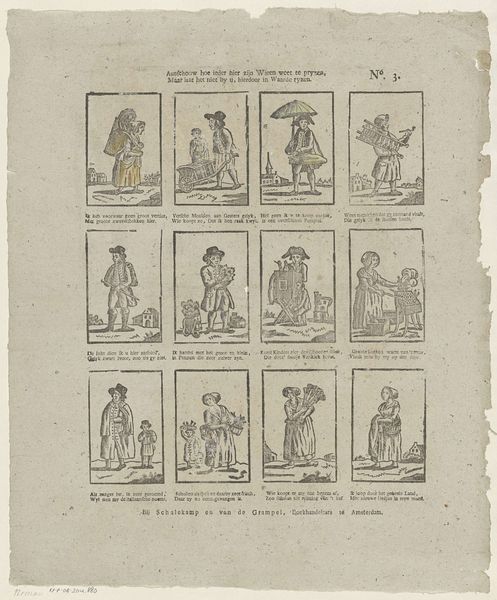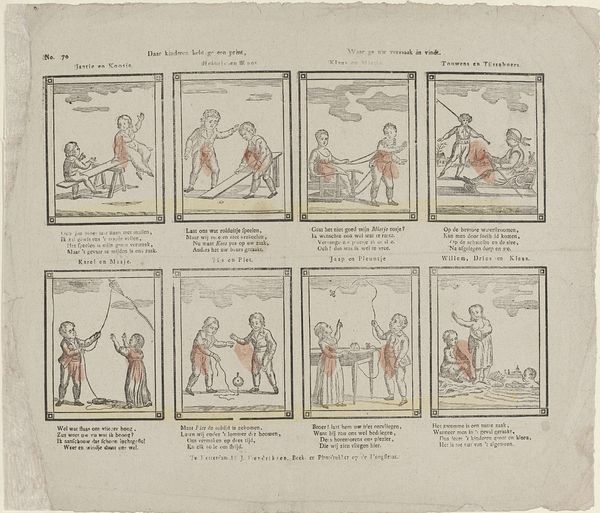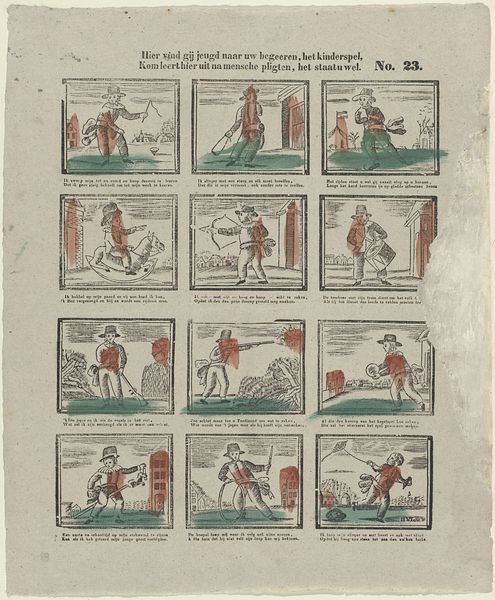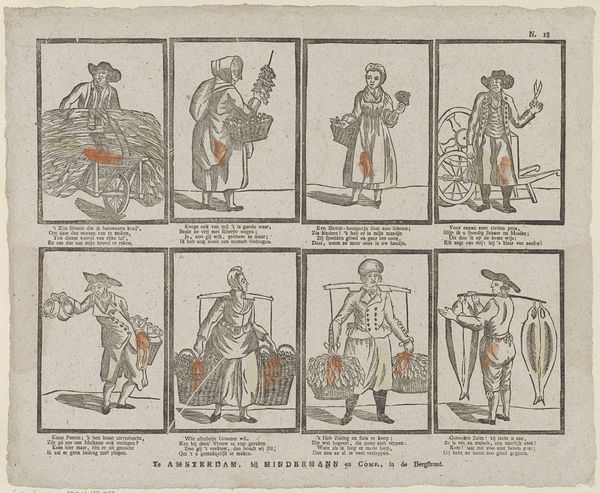
drawing, lithograph, print
#
drawing
#
comic strip sketch
#
imaginative character sketch
#
quirky sketch
#
lithograph
# print
#
cartoon sketch
#
personal sketchbook
#
sketchwork
#
ink drawing experimentation
#
sketchbook drawing
#
genre-painting
#
storyboard and sketchbook work
#
sketchbook art
Dimensions: height 330 mm, width 413 mm
Copyright: Rijks Museum: Open Domain
Curator: Here we have a fascinating print, “Afbeelding van acht onderscheidene werkzaamheden,” which roughly translates to "Image of eight distinct occupations," created sometime between 1827 and 1860. It's a lithograph, and from what I can see, depicts a range of artisanal trades. Editor: It’s a busy piece! My eye bounces between the vignettes. There's an appealing roughness to it, and those pops of muted color emphasize the handcraft depicted. It has this "day in the life" quality about it. Curator: Exactly! This print offers a glimpse into the 19th-century Dutch economy and the skilled labor that sustained it. The scenes show a carpenter, a potter, what looks like a barrel maker. It speaks to the division of labor and the craftsmanship valued at the time. Notice the prominence of male laborers, each defined by their specific trade. It emphasizes work, duty, and social stability. Editor: Yes, and seeing the workers portrayed this way reinforces a specific societal viewpoint – the idealized working man contributing to the common good. I wonder how gender and class intersect within these representations. Where are the women? Who isn’t depicted here and what does that tell us about power structures of the time? Curator: A critical reading indeed! By looking at these missing voices, we start to unravel assumptions about who was considered worthy of representation, whose work was valued, and who was relegated to the margins of historical narratives. This imagery wasn't simply documentation; it was carefully constructed social commentary. Editor: This challenges me to see art not only for aesthetic value but for how it shapes perceptions of social roles, equity, and the dignity of work, and reminds us of our own work to expand representation today. Curator: Indeed, it highlights how the echoes of history resound in the present, continuously shaping how we understand societal structures and imagine alternatives for the future.
Comments
No comments
Be the first to comment and join the conversation on the ultimate creative platform.
